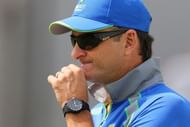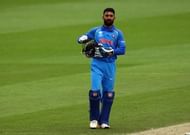Australia had been pushing BCCI to agree to play a day/night test in Adelaide during India's tour down under. After mulling over the decision for a while, BCCI finally chose not to agree to Cricket Australia's proposal of the day/night test. The decision has drawn severe criticism from several quarters of world cricket as this is not the first time that the BCCI has put its foot down on a matter(read DRS).
Criticism of BCCI's decision
This decision by BCCI has been criticised by many, including Ian Chappell and Mark Waugh who said that BCCI is holding back the future of Test cricket. Some have opined that this is nothing but another case of BCCI choosing to be late to the party, much like they were among the last boards to accept one day cricket in the 80s, and almost refused to send a team to the inaugural World T20 having refused to take the format seriously up to that point.

Then there is the history of BCCI's refusal to use DRS till its accuracy was raised enough to satisfy BCCI.
However, unlike these previous instances, BCCI's decision to refuse to play the day/night test has little to do with off-field matters and has been taken purely to boost India's chances of having a good series in Australia.
BCCI has not shown itself to be averse to the Pink Ball
The last thing anyone could accuse BCCI of is not knowing how to fill its coffers. When the first day-night Test proved it could bring people to the grounds after work, BCCI immediately started trials with Duleep Trophy being converted into a pink ball affair.
The trial scored a definite plus with the crowd. The tournament had previously been played in near-empty stands, suddenly had a decent number of people in attendance towards the evening.
The stadium was not exactly full, but the increase in attendance was definitely very noticeable. However the players didn't give positive feedback on the experiment.
Players were not satisfied with the Pink Ball
The first criticism was that under dew the pink ball was "difficult to handle" according to present KKR skipper Dinesh Karthik. Limited overs games under lights are already affected a great deal by dew in the subcontinent and no one would want dew taking one side out of the equation in a Test match.
Under dew, India blue coach Aashish Kapoor had compared holding the wet pink ball to holding a bar of soap in your hand.
Secondly the players said that the ball did a little too much when it was new, but then later on it was very difficult to get it to reverse swing, which is a key aspect of tests in the sub-continent, while Kuldeep Yadav also complained that it didn't spin as much as the red ball would have.

However, the one point that would have raised the red flags is that the players said the ball behaved differently under lights. Batsman Priyank Panchal warned that the ball just stopped coming onto the bat once the lights were turned on and that he had to make adjustments for that.
Panchal was backed by Pujara in this regard. Gambhir later echoed Pujara's reservations that ball behaved differently during the day than it did under lights.
Dinesh Karthik said that during the day he had no issues when collecting the ball, but under lights, the ball just seemed to become harder and made an impact in the keeper's gloves.
There were other issues as well, such as the ball losing shape fast and needed to be changed regularly, and when used on abrasive dry wickets the ball also lost its color. According to Abhinav Mukund, once the ball lost its sheen it was very difficult to see under lights, a point also raised by Dinesh Karthik after the experiment.
The frequent changing of the ball took reverse swing further out of play. To get a ball to reverse it needs to be scruffed up on one side, and once it is scruffed up it has to be changed due to visibility issues, effectively taking reverse out of play completely.
Pujara, who also played in the tournament, said that its seam was tough to see which made it difficult to pick the spinners' variations, especially the googly.
So even though the experiments put people into the seats, it didn't score high with the players. It just seemed to have been a different ball game and one couldn't make the transition from red ball to pink ball seamlessly.
Advantage Australia in a Pink Ball Test
A team previously used to playing with the Pink ball would have a definite advantage over one playing with the pink ball for the very first time.
Indian players are not the only ones that have had issues with the pink ball. Australian seamer Mitchell Starc has been a very vocal critic of the pink ball. Starc has in the past raised issues regarding lack of reverse swing as well as visibility.
Even South Africa didn't want to play the pink ball test
In the run-up to South Africa's tour of Australia in 2016, even the South African players had been sternly opposed to playing the day/night Test as they just didn't have the experience of playing with the Pink ball and that would give Australia a definiteedge, which would dent SA's chances of winning the series, one which they really coveted.
The SA cricket board eventually caved into the pressure from their Australian counterparts, but BCCI have no reason to do the same.
BCCI feel that the tour, with the Australian team weakened by the absence of both batting mainstays Smith and Warner, presents a great opportunity to end India's dismal run of never having won a test series in Australia and want to give the India team the best opportunity of doing so.
On the flip side is Australia's insistence of playing a day/night test against India simply all about giving its side a clear edge in one of the Tests and all this talk about the future of Test cricket simply hogwash.
I will stop short of making that accusation, but given that its Australia, that question definitely needs to be posed.
For once BCCI has taken a decision which as nothing to do with money and simply about giving India the best chance of winning a series in Australia.
The melodrama that has been created around the decision, as if the future of Test cricket hinges on BCCI playing a day/night test in Australia, seems to be nothing more than pressure tactics.
BCCI needs to stand firm. There will be plenty of opportunities to play day/night tests, and many will be played. There is no need to unnecessarily jeopardize India's chances in Australia.
Brand-new app in a brand-new avatar! Download CricRocket for fast cricket scores, rocket flicks, super notifications and much more! 🚀☄️
